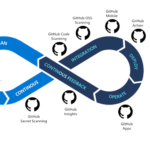Data security and privacy are paramount. For organizations,especially those handling sensitive customer data,achieving SOC 2 certification is a crucial milestone. But what exactly is SOC 2, why does it matter, and how can your organization navigate the complexities of compliance smoothly? This comprehensive expert-level guide walks you through everything from understanding SOC 2 benefits to a practical, detailed checklist to help you achieve and maintain SOC 2 certification.
What is SOC 2 and Why is It Important?
SOC 2 (Service Organization Control 2) is a globally recognized compliance framework developed by the American Institute of Certified Public Accountants (AICPA). It defines criteria for managing customer data securely and is particularly relevant to technology and cloud service providers. Unlike regulatory mandates, SOC 2 is voluntary; however, it is widely demanded by clients and partners as a trusted assurance of robust information security practices.
The framework revolves around five Trust Services Criteria: Security, Availability, Processing Integrity, Confidentiality, and Privacy. Every SOC 2 report covers the mandatory Security criterion, with the option to include others based on your business needs.
Technical Benefits
- Enhanced Information Security: Establishes strong controls like multi-factor authentication (MFA), encryption, access controls, and continuous monitoring, reducing risks of data breaches.
- Operational Improvements: Streamlines security processes, enforces standardized policies, and supports automation of controls for consistency and efficiency.
- Incident Preparedness: Defines incident response protocols, ensuring rapid detection and mitigation of security threats.
- System Integrity and Availability: Assures uptime and performance standards, backed by disaster recovery plans and robust infrastructure monitoring.
Business Benefits
- Customer Trust & Competitive Edge: Demonstrates commitment to data protection, helping win and retain clients sensitive about data security.
- Market Differentiation & Growth: Many enterprise clients require SOC 2 compliance before partnership, making it a critical sales enabler.
- Regulatory Alignment: While SOC 2 itself is not a regulation, achieving compliance can ease adherence to frameworks like HIPAA, GDPR, and ISO 27001.
- Investor Confidence: Shows operational maturity and security rigor, attracting investors and facilitating fundraising.
Strategies to Achieve SOC 2 Compliance
Achieving SOC 2 certification involves structured planning, implementation, auditing, and ongoing maintenance. Here are proven strategies to streamline your compliance journey:
1. Define Clear Objectives and Scope
Identify why SOC 2 matters for your organization,is it customer demand, market expansion, or risk mitigation? Clearly outlining objectives helps choose the right audit type (Type 1 or Type 2) and applicable Trust Services Criteria.
2. Conduct a Readiness Assessment and Gap Analysis
Evaluate your current security posture against SOC 2 criteria to identify gaps. This stage helps prioritize controls, assign responsibility, and address weaknesses early to avoid surprises during the audit.
3. Implement Relevant Controls
Based on your gap analysis, implement controls such as access management policies, encryption, logging, monitoring, and incident response processes. Testing these controls for effectiveness is critical, especially for Type 2 audits.
4. Engage an Experienced Auditor
Partner with an AICPA-accredited third-party auditor familiar with your industry. Early involvement helps clarify audit expectations and documentation requirements.
5. Leverage Automation Tools
Use compliance platforms and GRC (Governance, Risk, Compliance) tools to automate evidence collection, monitoring, and reporting. Automation reduces manual effort, speeds up audit readiness, and strengthens continuous compliance.
6. Establish a Culture of Continuous Monitoring
SOC 2 is not a one-time event but an ongoing commitment. Continuous internal assessments, automated monitoring, and routine policy reviews ensure sustained compliance and readiness for recurring audits.
Best Practices for SOC 2 Compliance
- Executive Buy-in: Secure leadership support and cross-department collaboration to ensure compliance efforts get the necessary resources and visibility.
- Document Everything: Maintain thorough policies, procedures, and audit trails to demonstrate consistent control operation.
- Employee Training: Educate employees about security awareness and their role in safeguarding organizational assets.
- Third-party Vendor Management: Assess and monitor vendors who have access to your systems or data, ensuring their controls align with SOC 2.
- Periodic Internal Audits: Conduct regular internal reviews and risk assessments to identify issues proactively.
- Prepare for Change Management: Integrate SOC 2 controls into development and operational workflows, including CI/CD pipelines and change approval processes.
Detailed SOC 2 Certification Checklist
The following detailed checklist (up to 100 items) provides concrete actions across all phases of the SOC 2 compliance journey. Customize it for your organization's scale and complexity:
Preparation and Planning
- Determine your SOC 2 compliance objectives aligned with business needs.
- Understand the SOC 2 Trust Services Criteria (Security is mandatory; consider Availability, Processing Integrity, Confidentiality, Privacy).
- Decide on SOC 2 report type: Type 1 (point in time) or Type 2 (period of time).
- Define audit scope: systems, applications, people, data, and locations to be included.
- Identify internal stakeholders and create a SOC 2 compliance team (IT, Security, HR, Legal).
- Establish communication channels among involved departments.
- Conduct initial SOC 2 readiness assessment using industry standards or automated tools.
- Create a project plan with timelines, milestones, and resource allocation.
- Inventory all IT assets and data repositories within scope.
- Identify applicable regulatory or contractual requirements related to SOC 2.
- Assess current information security policies and procedures for compliance gaps.
- Develop risk management framework to assess threats and vulnerabilities.
- Document roles and responsibilities for control implementation and maintenance.
Control Implementation and Testing
- Perform formal risk assessment and classify risks by likelihood and impact.
- Develop or update security policies covering access control, encryption, incident response, disaster recovery, and data retention.
- Implement multi-factor authentication (MFA) for all user access to critical systems.
- Ensure role-based access control (RBAC) and principle of least privilege are enforced.
- Encrypt sensitive data both at rest and in transit using strong cryptographic standards.
- Implement network firewalls, intrusion detection/prevention systems (IDS/IPS), and antivirus controls.
- Establish formal change management procedures to track and approve changes.
- Set up comprehensive logging and monitoring for system activity and security events.
- Deploy automated tools for vulnerability scanning and patch management.
- Develop and test incident response plans, including identification, containment, eradication, recovery, and post-incident review.
- Maintain documented configuration standards for all systems and infrastructure.
- Conduct employee background checks and enforce security training and awareness programs.
- Document all third-party vendor controls and monitor their compliance.
- Perform periodic internal audits and control effectiveness testing.
- Create evidence repository to collect screenshots, logs, policy documents, and training records.
- Test backup and disaster recovery processes for reliability and recovery time objectives (RTO).
- Ensure data disposal policies are followed to securely delete sensitive data.
Audit and Certification
- Engage with an AICPA-certified external auditor experienced in SOC 2 audits.
- Provide auditor with the defined scope, report type, and criteria selected.
- Submit control documentation and evidence for auditor review.
- Facilitate auditor walkthroughs and interviews with control owners.
- Address auditor requests for additional evidence or clarifications promptly.
- Review audit findings and remediation plans.
- Remediate identified issues with corrective actions and documentation.
- For Type 2 reports, maintain continuous controls monitoring during the audit period (3 to 12 months).
- Receive final SOC 2 report and review for accuracy.
- Communicate SOC 2 certification status internally and to customers as appropriate.
Ongoing Maintenance and Continuous Compliance
- Implement continuous monitoring systems for security, availability, and compliance metrics.
- Schedule regular internal compliance assessments and audits.
- Update policies and procedures annually or when significant changes occur.
- Maintain evidence collection process for ongoing audit readiness.
- Conduct periodic access reviews and recertify permissions.
- Train new employees on SOC 2 requirements and security policies.
- Manage vendor risk on an ongoing basis through assessments and audits.
- Test incident response and disaster recovery plans annually or after incidents.
- Prepare for annual recertification audits for Type 2 reports.
- Leverage compliance automation tools to streamline management and reporting.
Real World Examples
PreSkale, a SaaS platform, completed its SOC 2 audit under 30 days by leveraging compliance automation tools that streamlined evidence collection and controls monitoring, significantly reducing manual effort and cost.
Ripl reduced compliance effort to less than 10 minutes per week by establishing a continuous compliance program supported by automation platforms, enabling seamless readiness for SOC 2 audits.
For more on these examples: Sprinto SOC 2 Compliance Journey
Emerging Trends and Future Outlook
- Automation and AI-Driven Compliance: Increasing adoption of AI and automation tools to continuously monitor controls and automatically collect audit evidence.
- Integration with DevSecOps: Embedding SOC 2 controls into CI/CD pipelines to ensure security from code development to deployment.
- Expansion of Trust Criteria: Organizations increasingly including additional criteria like Privacy and Processing Integrity based on customer needs.
- More Frequent Audits: Demand for quarterly or real-time compliance reporting is rising to keep pace with evolving threats.
- Convergence with Other Frameworks: Harmonizing SOC 2 with ISO 27001, HIPAA, and GDPR for comprehensive governance.
Conclusion
Achieving SOC 2 certification is a powerful signal of your organization's commitment to security and data trustworthiness. It not only mitigates risks but also unlocks new markets, improves operational efficiencies, and builds stronger customer relationships.
While the path to compliance can be complex, systematic planning, leveraging automation, and fostering a security-conscious culture make it achievable. Use the detailed checklist provided to guide your journey, and remember,SOC 2 is not a checkbox exercise but a continuous commitment to excellence in information security.
For organizations in India and worldwide looking to enhance trust and security, SOC 2 compliance is an indispensable investment in business resilience.
Further Readings & Resources
- Sprinto: SOC 2 Compliance Checklist & Guide
- Vanta: SOC 2 Compliance Checklist
- A-LIGN: Preparing for a SOC 2 Audit
- Barnes Dennig: Understanding SOC 2 Compliance
- OneTrust: SOC 2 Compliance Explained
- Book: "The SOC 2 Handbook" by Andrew Sun (Practical Guide to SOC 2 Compliance)
Call to Action
If you're ready to confidently achieve SOC 2 compliance and strengthen your organization's security posture, let's connect and tailor a roadmap for your unique business needs. Reach out today via Stonetusker Contact Us . Your trusted partner in cybersecurity and compliance.



